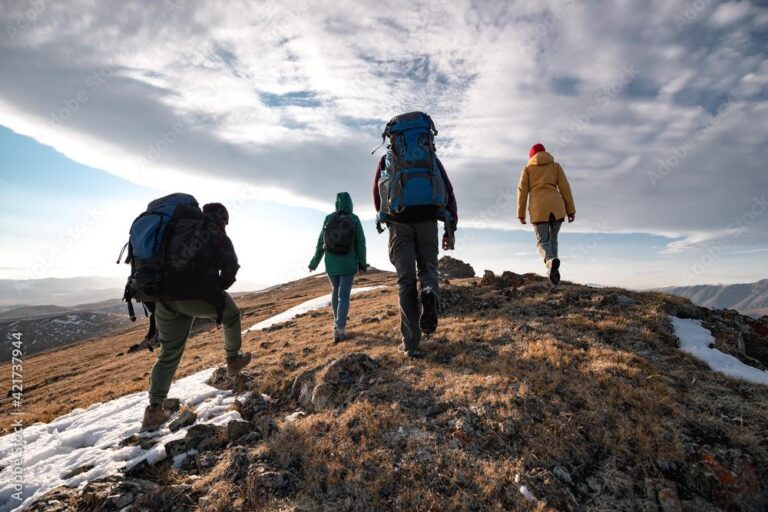Two hikers have died and three others sustained injuries following a sudden rockslide in Banff National Park, Canada, authorities confirmed Tuesday. The incident occurred in one of the park’s popular hiking areas, prompting immediate rescue operations and raising concerns about safety in the region. Park officials are investigating the circumstances surrounding the slide as search and rescue teams continue to assist those affected.
Casualties and Rescue Efforts Following Deadly Banff Park Rockslide
Rescue teams responded promptly after the sudden rockslide, which tragically claimed the lives of two hikers and left three others with varying degrees of injuries. Emergency crews faced challenging terrain and unstable rock formations, complicating rescue operations. Helicopters equipped for mountain retrieval were deployed to airlift the injured to nearby medical centers, while ground teams conducted exhaustive searches to ensure no one was left stranded in the affected area. Authorities have confirmed that the injured sustained fractures, lacerations, and hypothermia, and are currently under intensive care.
Efforts to secure the site and prevent further risks are ongoing, with park officials urging visitors to avoid the region until it has been fully assessed for safety. Below is a summary of the reported casualties and rescue actions taken so far:
| Status | Number of Hikers | Type of Response |
|---|---|---|
| Fatalities | 2 | Recovery and identification |
| Injured | 3 | Airlift and ground transport to hospitals |
| Search Operations | Ongoing | Ground and aerial teams conducting sweeps |
- Park officials: Emphasize visitor caution and adherence to warnings
- Rescue teams: Continue monitoring weather and slope conditions
- Medical staff: Providing critical care and trauma support
Geological Factors Contributing to Recent Rockslide Hazards in Banff
Recent geological assessments reveal that Banff’s steep and unstable rock formations have been significantly influenced by natural processes, amplifying the risk of rockslides. Freeze-thaw cycles prevalent in this mountainous region cause repeated expansion and contraction of rock fissures, weakening structural integrity over time. Additionally, the park’s underlying carbonate and clastic sedimentary rocks are prone to erosion and fracturing, especially where they meet fault lines cutting through the landscape. These combined effects create zones of heightened instability, increasing susceptibility to sudden, large-scale rockfalls.
Human activity and recent climatic variations have further intensified these hazards. Increased precipitation and rapid snowmelt events contribute to saturation of rock layers, reducing cohesion along fracture surfaces. Below is a simplified overview of key geological elements affecting slope stability in Banff:
| Factor | Impact on Rockslide Risk |
|---|---|
| Freeze-Thaw Actions | Widen rock cracks, destabilizing slopes |
| Rock Type (Carbonate Sediments) | Prone to erosion and fracturing |
| Fault Lines | Create natural weaknesses in rock mass |
| Increased Precipitation | Saturates layers, decreasing friction |
Environmental experts emphasize that these geological characteristics, combined with changing weather patterns, have created a volatile setting for hikers and visitors. Enhanced monitoring and updated risk mapping are considered critical steps to mitigate future tragedies in this iconic natural landscape.
Safety Measures and Guidelines for Hikers Navigating Rocky Terrain in National Parks
When trekking through rugged landscapes, especially in national parks known for their rocky terrain, hikers must prioritize vigilance and preparedness to mitigate risks. Always check the current weather and geological conditions before setting out, as rapid changes can increase the likelihood of rockslides. Sturdy footwear with excellent grip and appropriate hiking gear are essential, alongside carrying communication devices such as a GPS or satellite phone for emergency contact. Traveling in groups and informing park rangers of your planned route greatly enhances safety, allowing rescue teams to respond more effectively in critical situations.
Awareness of potential hazards extends beyond just the trail itself. Here are key considerations every hiker should keep in mind:
- Stay on marked paths: Avoid venturing onto loose or unstable rock formations.
- Monitor rockfall zones: Pay close attention to signs warning about recent rockslides or unstable cliffs.
- Travel during daylight: Visibility is crucial for spotting danger and safely navigating complex terrain.
- Carry emergency supplies: Include first aid kits, water, and thermal blankets.
| Safety Item | Purpose |
|---|---|
| Sturdy Hiking Boots | Enhanced foot support and grip |
| Helmet | Protects from falling debris |
| Satellite Phone | Emergency communication in remote areas |
| First Aid Kit | Treat injuries until help arrives |
| Thermal Blanket | Prevents hypothermia |
Concluding Remarks
The tragic incident in Banff National Park serves as a stark reminder of the unpredictable dangers inherent in mountainous terrain. Authorities continue to investigate the cause of the rockslide, while rescue teams remain on alert as conditions in the area are carefully monitored. As Canadian officials and park services review safety measures, they urge all hikers to exercise heightened caution and stay informed of current trail conditions to prevent further loss of life.




